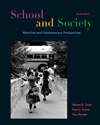Chapters 11 through 13 correspond to Chapters 4 through 7 in their emphasis on race, ethnicity, economic class, and gender as elements of social and economic inequity. Chapter 11 corresponds to Chapter 4 in its attention to the contrast between vocational and liberal ideals in education. Some readers view Chapter 11 as the most important one in the volume. It makes explicit a theme that has pervaded the text up to this point: while the historic ideals of liberal education have come to us from cultures that were structured in racist, sexist, and class-biased ways, key dimensions of liberal education ideals are worth preserving. These ideals emphasize both the full development of the intellectual and emotional capacities of each person and the idea that as human beings we have more in common than in contrast with one another; accordingly, these ideals are worthy of shaping our educational aims for all students. This chapter presents a strong argument that the democratic ideal of "the all-around growth of every member of society" that Dewey advocated and that remains compelling today has not been well served in the historic development of vocational education goals, programs, and results. The chapter then turns to examining a different approach to vocational education, one that uses vocational methods to achieve traditionally liberal education ideals. Examples of current practice illustrate the Deweyan approach to education through vocations instead of education for vocations. A brief history of the concept of liberal education, reaching from Aristotle to Jane Roland Martin's feminist critique of liberal education, provides a context for current debates concerning the aims of education. The concluding Primary Source Reading explores the notion that our best educational ideals should be applied to all students, not just the "academically inclined." |



 2002 McGraw-Hill Higher Education
2002 McGraw-Hill Higher Education